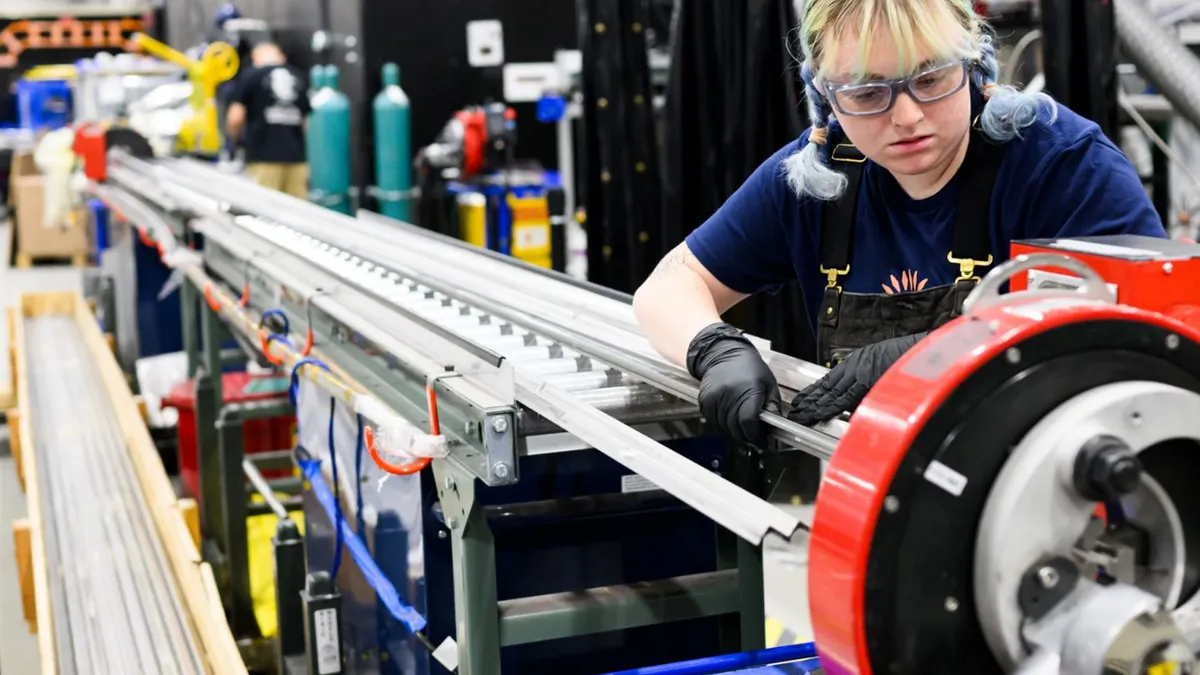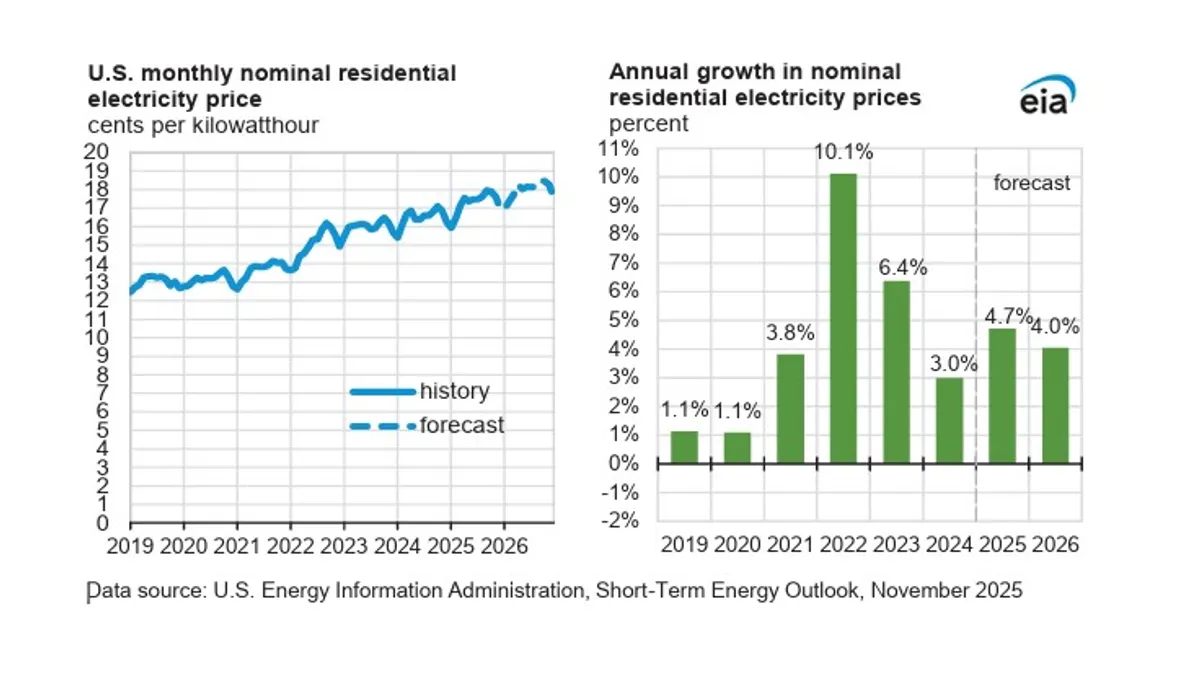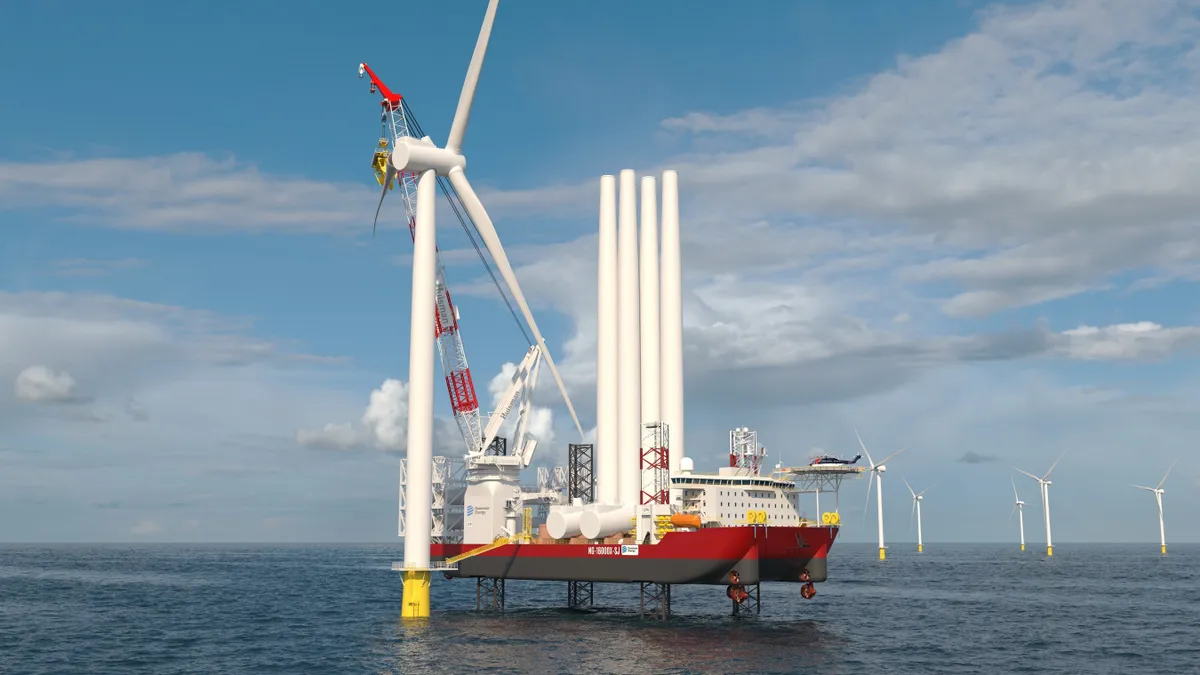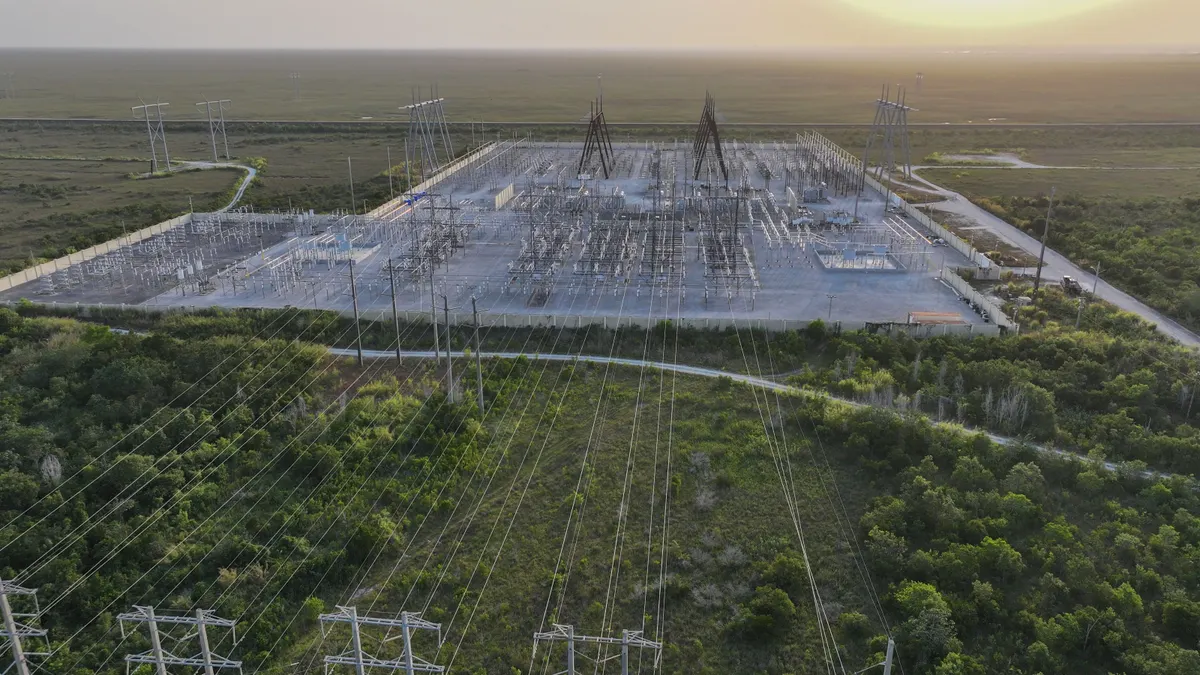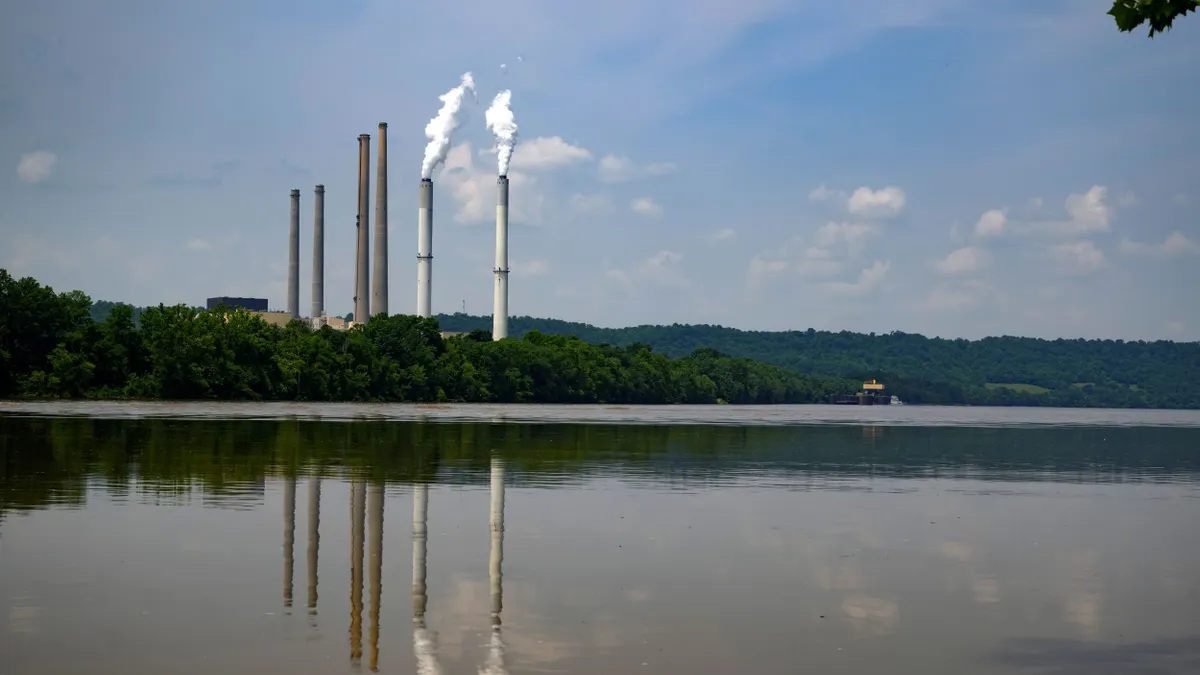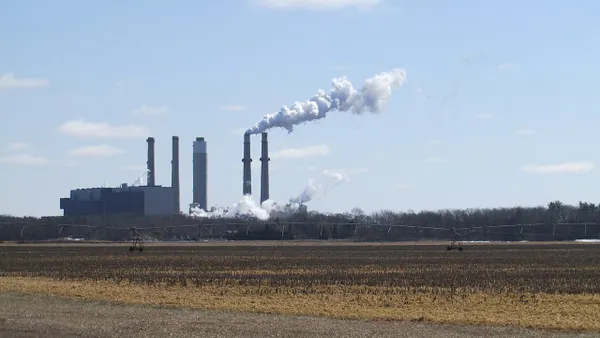Several utilities are exploring partnerships with nuclear fusion startups that promise to deploy the cutting edge technology at commercial scale – a feat that has eluded scientists for decades.
Recent technical breakthroughs at government labs around the world have moved this milestone closer, but industry and experts are divided over how close.
“We’re seeing these companies get a little more serious about their siting and deployment plans, no longer just making vague promises about getting fusion onto the grid ‘in a few years,’” said Patrick White, group lead for fusion safety and regulation with Clean Air Task Force.
Inside a nuclear fusion reactor, lightweight atoms smash together under incredible heat. The energy they release drives a power conversion system similar to those found in existing thermal power plants’ generator rooms. Electricity comes out the other side. The process is energy-dense: A ton of the hydrogen isotope deuterium, one possible fusion fuel, contains the energy equivalent of 29 billion tons of coal.
Commercial fusion power still exists only in theory because sustaining an earthbound atom-smashing reaction at temperatures hotter than the sun’s core is a formidable technical challenge. For years, scientists warned that commercial fusion power was always 50 years off.
Utilities strike fusion partnerships following breakthroughs
Now, they’re not so sure.
In late 2022, the U.S. Department of Energy’s Lawrence Livermore National Laboratory said it had achieved a vital breakthrough. For the first time, scientists there had created and briefly sustained a fusion reaction that generated more energy than it consumed – a threshold called “net energy gain” or “Q>1.”

The lasers that sparked the reaction consumed about 90 kW of electricity over a span measured in nanoseconds, said Patrick Poole, an LLNL research physicist involved in the breakthrough.
Earlier this year, fusion facilities in China and France sustained reactions for longer than 15 minutes, far longer than the LLNL experiment. CEA, the French fusion facility, said in February that durations of several hours were within its reach.
But it also said that fusion technology is “unlikely” to make a significant contribution to achieving net-zero carbon emissions by 2050, citing massive infrastructure requirements and “several technological sticking points [that] need to be overcome.”
The 500-MW International Thermonuclear Experimental Reactor, the Western Hemisphere’s flagship government-led fusion project under construction in the south of France, is nearly a decade behind schedule and billions of euros over budget.
Most U.S. utilities and private fusion companies agree that significant technical challenges remain to be solved for commercial fusion power to become reality. But they believe that could happen within 10 to 15 years — and maybe sooner.
With backing from OpenAI CEO Sam Altman, fusion startup Helion began work in July on a 50-MW Washington State fusion plant it says will power up in 2028.
“Our confidence lies in the fact that we have built seven prototypes that have done fusion,” said Anthony Pancotti, Helion’s co-founder and head of R&D, in an email. “With construction having begun on the site of our first fusion power plant in Malaga [Washington], we’re on track to meet our commitment to Microsoft to put electrons from fusion on the grid by 2028.”
Another startup, Commonwealth Fusion Systems, aims to activate its Massachusetts test reactor a year earlier, in 2027, then partner with Dominion Energy to deploy a 400-MW commercial plant in Virginia in the early 2030s, it says. The company is building a donut-shaped tokamak reactor, similar to the design under development at ITER.
“It is easy to overpromise in that space ... We kind of worry that laypeople or the venture capital world will get kind of disheartened if things don’t come up perfect after five years.”

Patrick Poole
research physicist at the U.S. Department of Energy’s Lawrence Livermore National Laboratory
The 400-MW power plant would likely be “a standard building block that’ll allow for even more modular manufacturing and economies of scale,” Commonwealth Fusion Systems’ Chief Commercial Officer Rick Needham said in an email.
Though smaller than most of the conventional fission reactors operating in the U.S. nuclear fleet today, a 400-MW power plant would be on par with individual units at modern coal or combined-cycle gas power plants. Future utility customers or direct end-users could host multiple plants at a single site as needed, Needham said.
“With respect to eventual prices for power, we feel confident that our future ARC plants can be the lowest cost form of clean, firm power that can be deployed essentially anywhere,” Needham said.
Dominion Energy Virginia said in a press release that it will provide non-financial collaboration to Commonwealth Fusion Systems, including development and technical expertise, as well as leasing rights for the proposed site, which it owns.
A spokesperson for Dominion Energy confirmed that the non-financial collaboration is the only support it is providing.
Further south, the Tennessee Valley Authority is beefing up its partnership with Type One Energy with the aim of bringing a 350-MW fusion facility online “as early as the mid-2030s.”
A cooperative agreement announced in February builds on an earlier partnership focused on deploying a fusion prototype at TVA’s retired Bull Run coal plant.
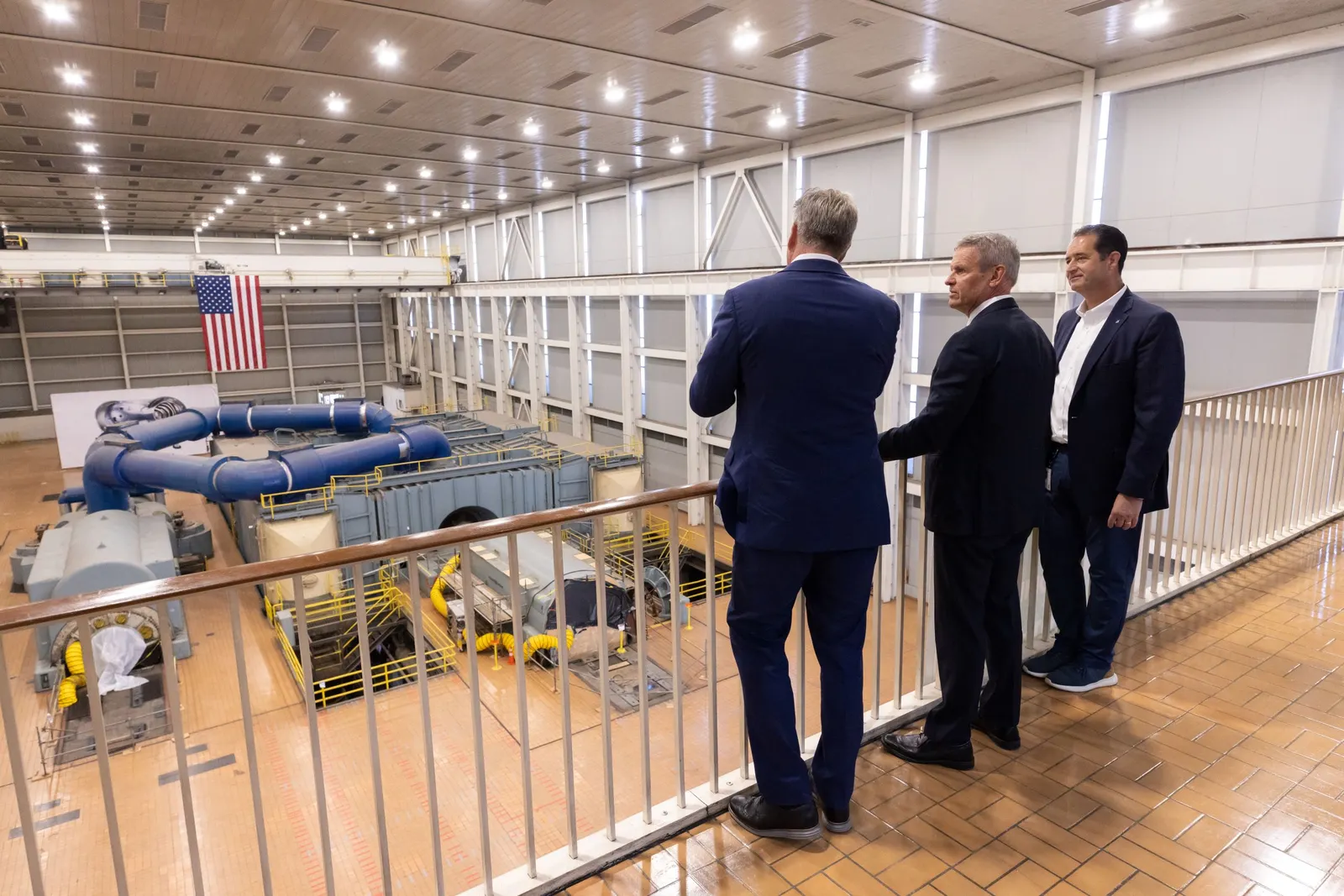
The project now “encompasses a deeper, broader engagement toward commercialization of fusion energy,” Type One said in a statement. It includes access to TVA’s Power Service Shops in Muscle Shoals, Alabama, which the companies say will enable supply chain development and modular component manufacturing, as well as “talent and resources” for workforce development from the states of Tennessee and Alabama.
“We are strategically partnering with innovative companies like Type One Energy to advance the development of nuclear technologies,” TVA President and CEO Don Moul said in a statement. “I am excited about the possibility of the first U.S. commercial stellarator fusion power plant being built in the Tennessee Valley,”
Progress may not be fast enough for investors
White, of the Clean Air Task Force, cautioned that lots of technical work remains to be done before the first commercial fusion plants can come online.
As in the advanced fission industry, every fusion startup puts its own spin on the technology and balances key factors like reactor capacity, efficiency and output flexibility. The divergent approaches suggest successful fusion companies will try to carve out niches for themselves.
“Some technologies are going to scale down easier at lower power outputs, while others will have an economic optimum at a higher output,” White said. “There’s no ‘one size fits all’ fusion machine.”
LLNL’s Poole said in an interview that a viable fusion power plant could still be 15 to 30 years away, depending on manpower, funding and luck. That might not be fast enough for venture capital firms seeking faster returns.
“It is easy to overpromise in that space,” Poole said. “We kind of worry that laypeople or the venture capital world will get kind of disheartened if things don’t come up perfect after five years.”
Even some private-sector fusion leaders think a 10-year timeline is optimistic, let alone Helion’s three-year sprint. They also say competitively priced fusion power will prove elusive even after Q>1 is in the rearview.
“This happens periodically in fusion [power], where there’s a lot of excitement, a feeling like we’re close,” said Greg Piefer, CEO of SHINE Technologies, which uses fusion to produce medical radioisotopes.
“My view is not only do we not know how to handicap success, but we also don’t know how much capital needs to be invested for this to be cost-effective,” Piefer said.
Trouble is already brewing in some corners of the industry.
In May, the CEO of Vancouver-based General Fusion put out an unusual public appeal for fresh funding, hinting that the company might not survive without it. Investors responded to the tune of $22 million, the company said this month — without indicating how much time the infusion would buy.
A new nuclear race
For now, however, the money is still flowing.
Though still a small slice of the $1.2 trillion the wider clean energy industry attracted between 2020 and 2023, the Fusion Industry Association says fusion investment is up fivefold since 2021. Cumulative funding for the 53 fusion startups the FIA tracks neared $10 billion earlier this year.
Commonwealth Fusion Systems is among the best-funded of the bunch, according to publicly available announcements and fundraising data. It has raised more than $2 billion since spinning out of the Massachusetts Institute of Technology in 2018, giving it capital to finance construction of its SPARC test reactor near its headquarters in Devens, Massachusetts. It expects SPARC to achieve Q>1 in 2027.
That would be a first for commercial fusion power technology, Needham said. It’s a critical milestone as CFS develops the full-size commercial reactor design it calls ARC, he added.
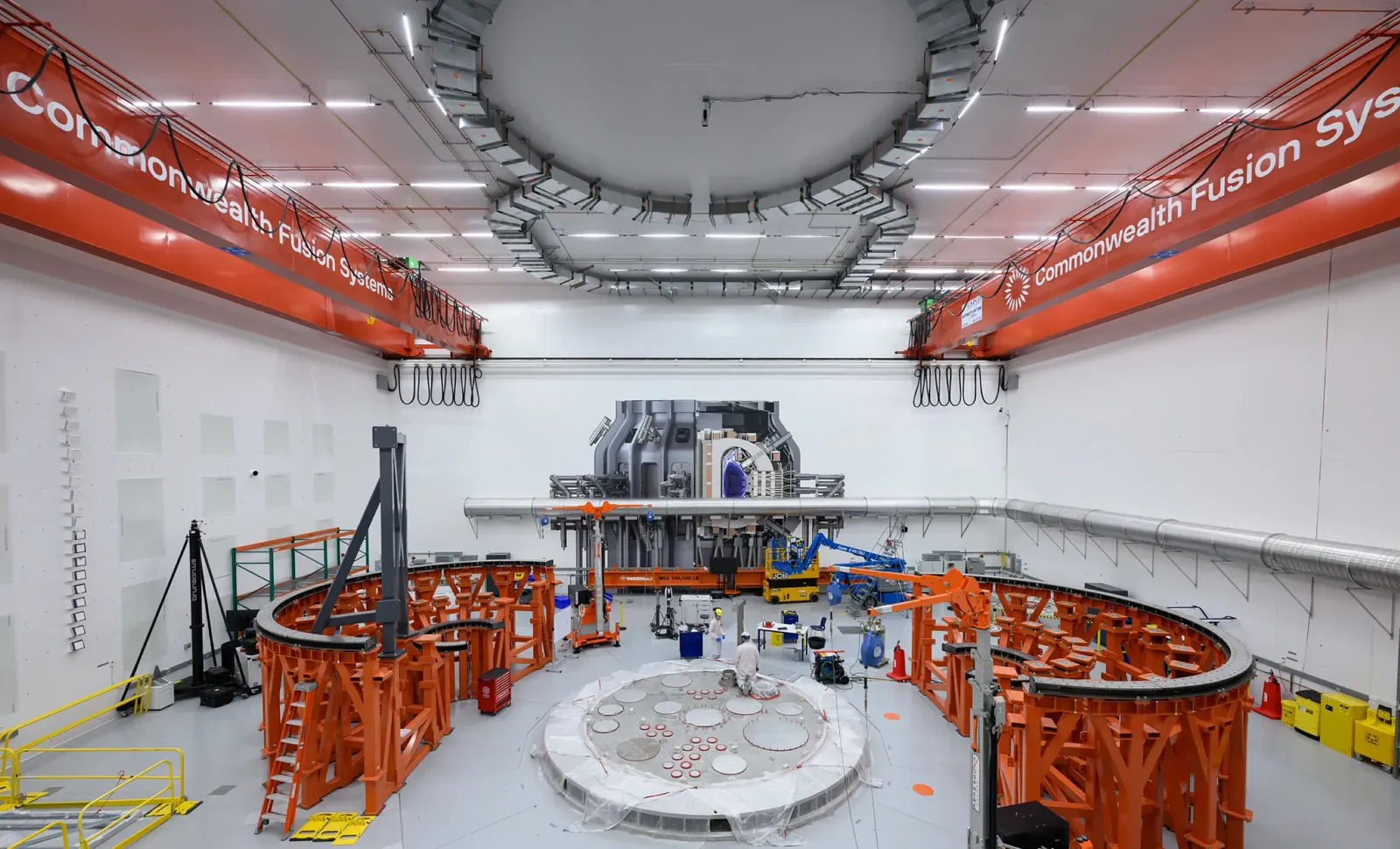
“SPARC is … designed to prove out most of the subsystems necessary for our ARC power plants, develop operational expertise and fine-tune ARC’s design,” Needham said.
When SPARC powers up, it will produce a superheated plasma that fuses hydrogen isotopes into helium and releases energy-rich neutrons. It’s the same basic process that occurs in the sun’s core, albeit at far lower pressure, and a mirror image of the atom-splitting fission reaction powering commercial nuclear reactors today.
Like stars, fusion reactors produce little long-lived radioactive waste, a key advantage over fission and the basis for lighter-touch federal regulation. However, unlike celestial fusion machines, earthbound tokamaks and stellarators can’t rely on gravity to sustain their reactions. Without powerful magnets to contain it, the plasma rapidly dissipates.
This “containment” problem vexed fusion scientists for decades. Now, it appears surmountable thanks to superconducting magnet technology that Needham said will make commercial fusion plants more compact, bankable and cost-effective.
SPARC will validate that magnet technology as CFS continues work on other key subsystems. Those include the molten-salt “blanket” that captures energy from the tokamak and “newer materials and designs to further improve aspects of our power plants like output and capacity factor,” Needham said.
If all goes well, those subsystems will make their commercial debut in ARC, the 400-MW Virginia plant CFS and Dominion plan to codevelop after 2030. Two early investors in CFS, Google and the Italian oil company Eni, will purchase the majority of its output.
Needham characterized the first ARC plant as a blueprint for future fusion facilities. He said it will ramp up operations over time and help CFS validate its operations in a grid-connected environment, paving the way for future 400-MW units to run at capacity factors on par with other firm power sources. The molten salt heat transfer system could eventually support cogeneration or energy storage applications, adding further value, he added.
CFS isn’t the only company that believes it has a clear path to grid-connected fusion power.
Washington-based Helion hopes to beat its East Coast competitor by several years. It’s banking on a novel design, a smaller reactor, an offtake agreement with Microsoft and surplus interconnection capacity at a hydroelectric dam to get its first commercial plant’s power on the grid by 2028.
Helion’s “pulsed, non-ignition fusion system” combines elements of the relatively well-studied tokamak design and other approaches to fusion in a way that “helps us overcome the hardest physics challenges [and] build highly energy-efficient devices,” the company says. Like CFS, Helion’s machine uses magnets to confine plasma.
Pancotti said Helion will generate electricity from the fusion reaction itself, avoiding the need for the steam cycle infrastructure found in traditional nuclear power plants and “[lowering] our overall capital cost requirements.”
The company plans to manufacture much of its equipment and systems at its facility in Everett, Washington, he added.
“We’re at a turning point where we’re going from burning chemical energy as a society to being a nuclear-powered society.”

Greg Piefer
CEO of SHINE Technologies
“Our strategy is to essentially build an assembly line that will allow us to achieve economies of scale for future plants and manufacture critical components in house,” he said.
Helion also plans to operate a closed-loop system that produces the fuel the plant needs, he said. Pool said that’s a fairly common goal of fusion startups.
But Pancotti admitted that Helion “continues to refine our plasma-facing materials … and our magnetic coils, with the goal to extend the lifetime for commercial power output.”
Regardless of their technology or design, hardening reactor materials to withstand intense temperatures and radiation for years on end is a problem that every commercial fusion company will have to address sooner or later, Poole said.
SHINE Technologies stands out among fusion startups for what it calls a “revenue-first approach.” It’s producing and selling commercial radioisotopes in a Wisconsin particle accelerator it opened in 2023. Because it’s concerned only with producing neutrons and not net energy, Piefer said SHINE’s machine is much simpler than power-producing machines designed to confine plasma for long periods of time.
SHINE’s radioisotope business line earns significant revenue, Piefer said, though he declined to say exactly how much. The cash flow could eventually fund a push into nuclear waste recycling and then fusion power, according to a timeline on SHINE’s website.
“We won’t be first to Q>1, but we will be first to economics greater than one,” Piefer quipped — meaning SHINE expects to be profitable long before its competitors. “The worst-case outcome is we’ll be the most experienced builders of fusion facilities in the world and let others commercialize fusion power.”
Piefer, who has a PhD in nuclear engineering, agreed with LLNL’s Poole that it could take up to 30 years for that to happen. But despite his skepticism toward the current batch of startups and their aggressive timelines, even he believes commercial fusion-powered electricity generation is inevitable.
“What we know is: It’s coming together,” he said. “We’re at a turning point where we’re going from burning chemical energy as a society to being a nuclear-powered society.”
Editor's note: This story has been updated with comments from Dominion Energy clarifying its relationship to Commonwealth Fusion Systems.
Correction: This story has been updated to reflect Don Moul is the Tennessee Valley Authority president and CEO.


